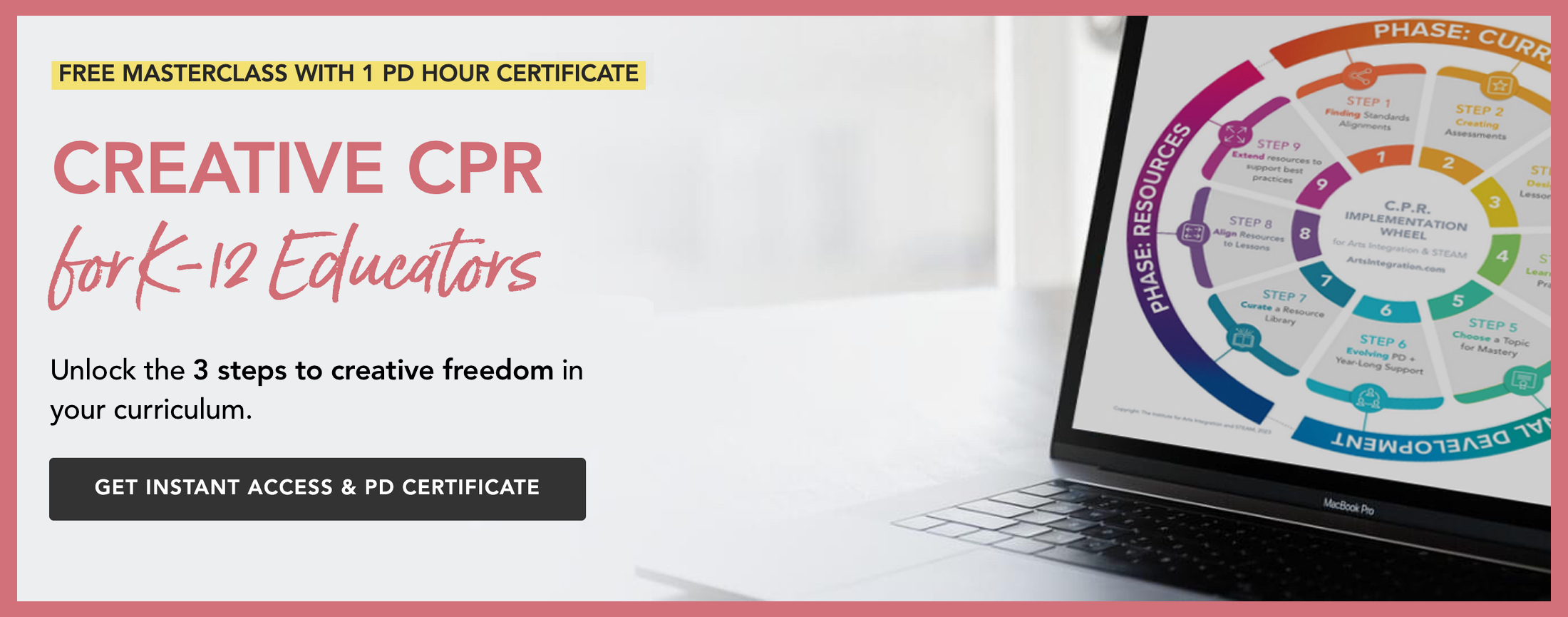Painting with Music
4 Min Read • Social/Emotional Learning
To be emotionally healthy, you have to be self-aware of your emotions. But this is difficult for young students. We have to teach them what different emotions look and feel like, beyond just happy and sad. Once we have taught these differences in emotions, students are more able to identify them to us. This allows us to meet their needs.
We can teach emotions through art because art is emotional. That’s no secret. When we utilize multiple art forms to teach these emotions… that’s where the magic is.
Painting with Music
Purpose: To help students identify and verbalize emotions.
Age: Designed for Upper Elementary/Middle. Could also be adapted for Lower Elementary or High-School
Time Frame: Minimum 1 week. Ideally, 2 weeks, but could be lengthened depending on how many extension activities you include.
Driving Questions
- How does music show emotion?
- How can we express what music makes us feel inside?
- Why do different musical pieces make us react in different ways?
- What are healthy ways to express emotions? (positive and negative)
Prior Knowledge Needed
- Abstract Art
- Warm and Cool colors and what symbolism they can show.
Build Background
- Brainstorm emotions
- Expand these emotions by incorporating synonyms and adjectives.
- For example cross, angry, irate, seething, up in arms, enraged cont.
- Discuss shades of meaning
- My students order the words so that they are in “rank” order. I do this by asking the students questions: Which is worse? Being angry or being irate?
- Expand these emotions by incorporating synonyms and adjectives.
- Discuss mood and tone in reading, visual art, and music and how artists convey that.
Process
- Play a piece of music (examples below). I usually just use a clip for time’s sake.
- Play the piece a second time. This time, have the students illustrate the music. Give students paper and whatever medium you choose. (I prefer paint.) Encourage students to draw abstractly. This will allow them to have a more complete work at the end of the music. Try not to coach students during their time with the music. Let them really FEEL the music.
- Give the students the option of repeating the song for an additional time. Some of my students always need more time. However, I would not play the song more than twice. It is best if the students act on their first instinct in this activity.
- Then repeat this process two more times with contrasting music pieces.
Depending on your students and their age/ability you may want to model the activity beforehand. In my experience, students sometimes have difficulty “letting go” and moving (painting) with how the music makes them feel. (Especially those perfectionists we all have!) I notice that as the students repeat the process they seem to loosen up and experiment more. So, if they don’t perform the first time as you expect, KEEP GOING!
Evaluation
- STUDENT EVALUATION
- Have the students lay the three prints side by side. Allow time for the students to reflect on their 3 pieces of art.
- Use a treemap for the students to organize their thoughts. I like students to point out similarities and differences in their 3 pieces of art. Make sure students look at style and color choice.
- Have the students label the emotions they felt with each piece of music.
- Allow students to compare each other’s prints and show variances in emotions.
- TEACHER EVALUATION
- Use a checklist to evaluate student participation as well as representation of the emotions.
- Remember this is about students identifying feelings within themselves and allowing them safe opportunities to discuss these feelings. I do not advise “grading” this activity.
Extension Activities
- Write a story that incorporates all three emotions. Use the paintings as illustrations.
- Create their own music to showcase different emotions.
Options for Music Selections
This is a very general list. There are many songs across many genres that could fit to teach emotions.
Classical:
William Tell Overture, Finale – Gioachino Rossini
The Imperial March – John Williams
Danse Macabre – Camille Saint-Saëns
Rhapsody in Blue – George Gershwin
Contemporary:
Can’t Stop This Feeling – Justin Timberlake
Defying Gravity – Idina Menzel
I find so many of my students don’t know how to verbally express what they are feeling inside. Above all, this activity will help your students become clued into their emotions. So when they are feeling anxious, depressed or joyful they can think back to the music and verbalize how they are feeling. This also shows students how emotions can be released through art. Both music and visual art have a place in our classrooms and one of those places is to reach students’ emotions.



